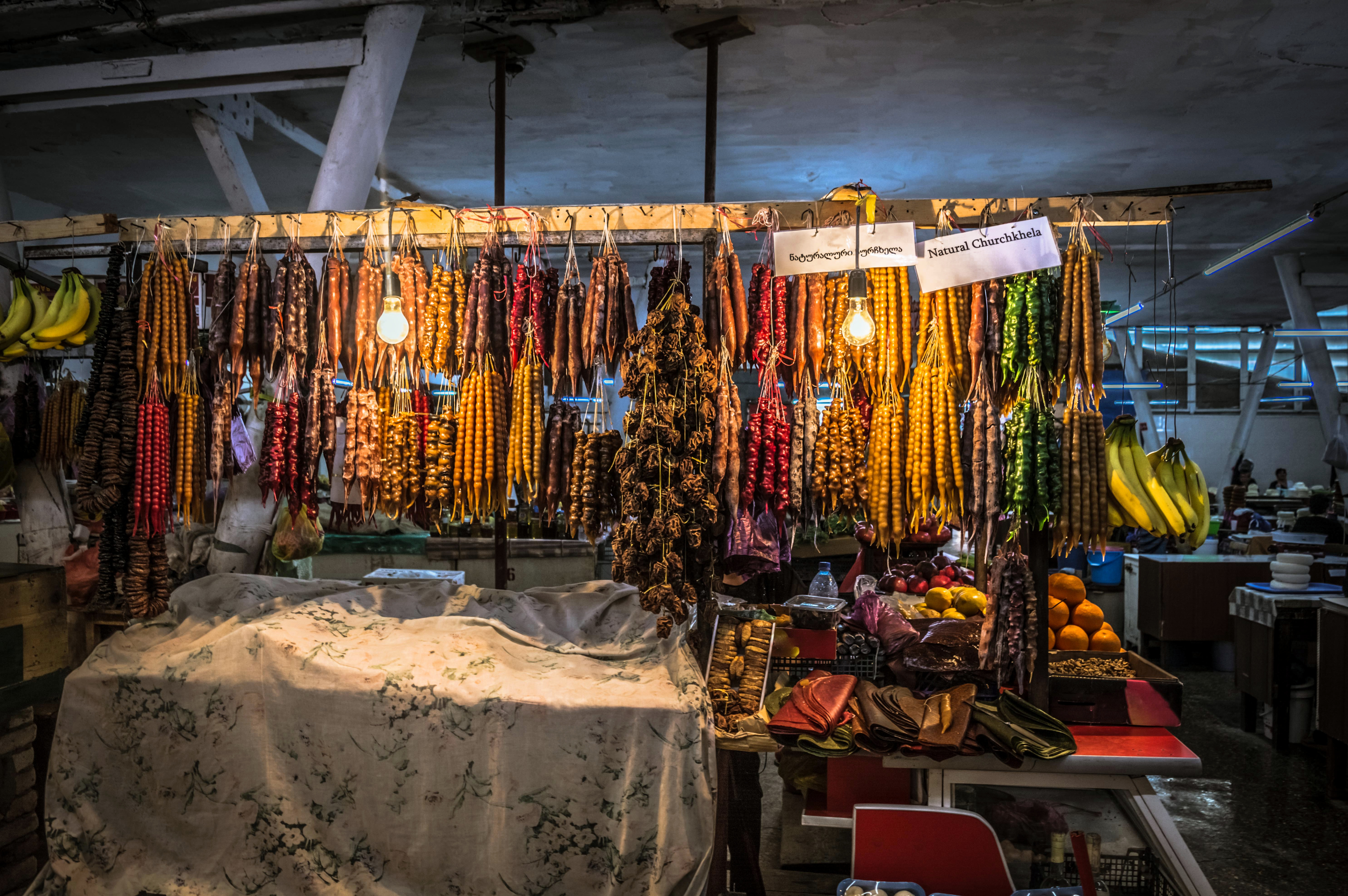
Georgian Culinary Treasures
Georgia, a country at the crossroads of Europe and Asia, is a hidden gem known for its rich cultural heritage, stunning landscapes, and, most notably, its extraordinary culinary traditions. Georgian cuisine is a feast for the senses, blending bold flavors, fresh ingredients, and centuries-old recipes passed down through generations. Traveling to Georgia offers a unique opportunity to indulge in its diverse, hearty dishes, experience its deeply rooted food culture, and connect with the people who treat food as an expression of love, hospitality, and national pride.
The Unique Blend of East and West
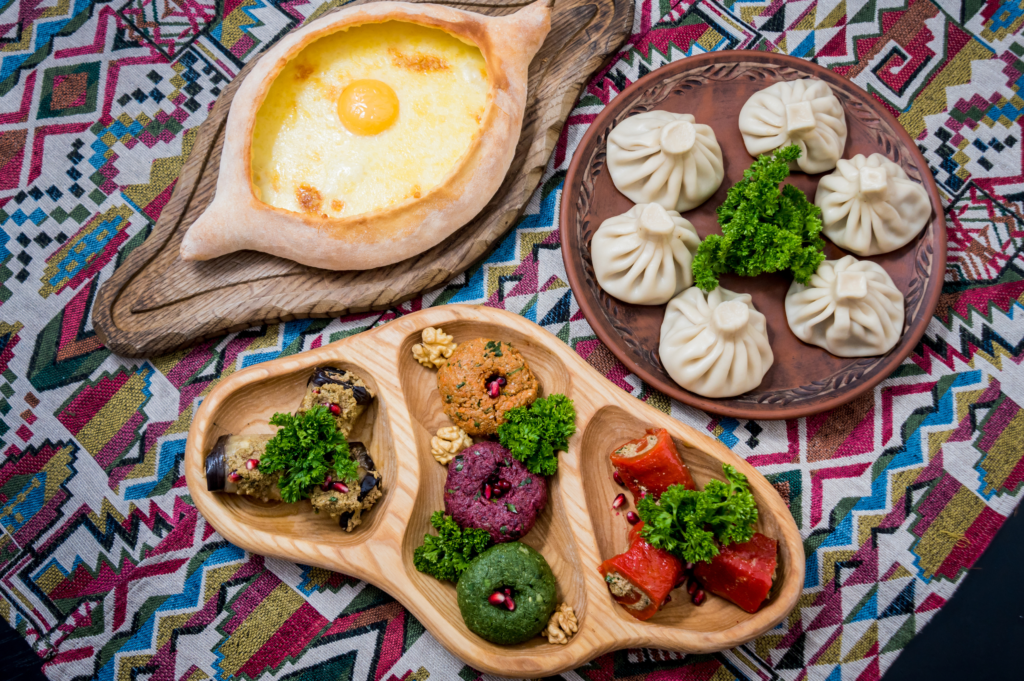
Georgia’s cuisine is heavily influenced by its geographic position at the intersection of the Middle East, Eastern Europe, and Asia. As a result, Georgian food combines elements from these regions, while still maintaining its own distinct identity. This unique fusion makes Georgian cuisine both familiar and exotic, appealing to a wide range of palates.
- Middle Eastern Influences: From the use of fragrant spices to the focus on grilling meats, there are notable influences from the Middle East in Georgian cuisine, especially in dishes like mtsvadi (grilled meat skewers) and kebabi.
- European Touches: Some Georgian dishes reflect a European influence, particularly in the use of bread, cheese, and wine. The country’s famous cheese-filled bread, khachapuri, is a good example of this fusion.
Asian Hints: The use of walnuts, coriander, and saffron, as well as the method of wrapping food in leaves or dough, echoes the traditions of Persian and Central Asian cuisines.
Must-Try Georgian Dishes

One of the greatest joys of traveling in Georgia is sampling its diverse array of dishes. Georgian cuisine is a celebration of fresh, local ingredients, hearty flavors, and bold seasonings. Below are some of the essential dishes that travelers should experience.
a. Khachapuri: Georgia’s Iconic Cheese Bread
No visit to Georgia is complete without tasting khachapuri, a dish that is synonymous with Georgian cuisine. This cheese-filled bread comes in several regional variations, but the common thread is its rich, cheesy goodness.
- Adjaruli Khachapuri: Perhaps the most famous version, this boat-shaped bread is filled with melted cheese, topped with a runny egg, and finished with a slab of butter. It’s hearty, indulgent, and incredibly satisfying.
- Imeruli Khachapuri: A simpler, round version of khachapuri, this type is filled with a mixture of local cheeses and baked to perfection. It’s a popular street food and a must-try for any traveler.
b. Khinkali: Juicy Georgian Dumplings
Khinkali are large, juicy dumplings filled with spiced meat (often a mixture of beef and pork) or mushrooms, potatoes, or cheese for a vegetarian option. These dumplings are traditionally eaten by hand, with a special technique that involves biting into the doughy exterior to release the flavorful broth inside.
- Svaneti and Kazbegi Varieties: Khinkali originated in Georgia’s mountain regions, particularly in Svaneti and Kazbegi, and each region has its own variations. In the mountains, you’ll find heartier versions of these dumplings, often spiced with local herbs.
c. Pkhali: Georgian Vegetable Appetizers
Pkhali are traditional Georgian vegetable pâtés made from ingredients like spinach, beets, eggplant, or beans, mixed with ground walnuts, garlic, and a variety of spices. These colorful, nutritious appetizers are usually served with pomegranate seeds for a sweet-tart finish and are a staple at Georgian feasts.
- Walnut Influence: Walnuts are a key ingredient in Georgian cuisine and are used in many dishes, including pkhali, soups, and sauces, adding richness and texture to the food.
d. Lobio: Hearty Bean Stew
Lobio is a traditional Georgian dish made from red beans, slow-cooked with onions, garlic, cilantro, and a mix of Georgian spices like coriander and blue fenugreek. Served with pickles and fresh herbs, lobio is often enjoyed with mchadi (cornbread) or tonis puri (Georgian bread).
- Variations: Lobio can be served hot or cold and can vary from a thick stew to a mashed dip. It’s a simple yet deeply flavorful dish that is comforting and filling.
e. Mtsvadi: Georgian Grilled Meat
Mtsvadi is Georgia’s version of grilled meat skewers, typically made with marinated pork or lamb, cooked over an open flame. The meat is often seasoned with simple ingredients like salt, pepper, and onions, allowing the quality of the meat to shine. It’s a popular dish at outdoor gatherings, festivals, and family celebrations.Kakhetian Mtsvadi: In the wine region of Kakheti, mtsvadi is often served with a side of fresh vegetables and wine, making it the perfect accompaniment to a day of wine tasting.
Traditional Georgian Food Culture
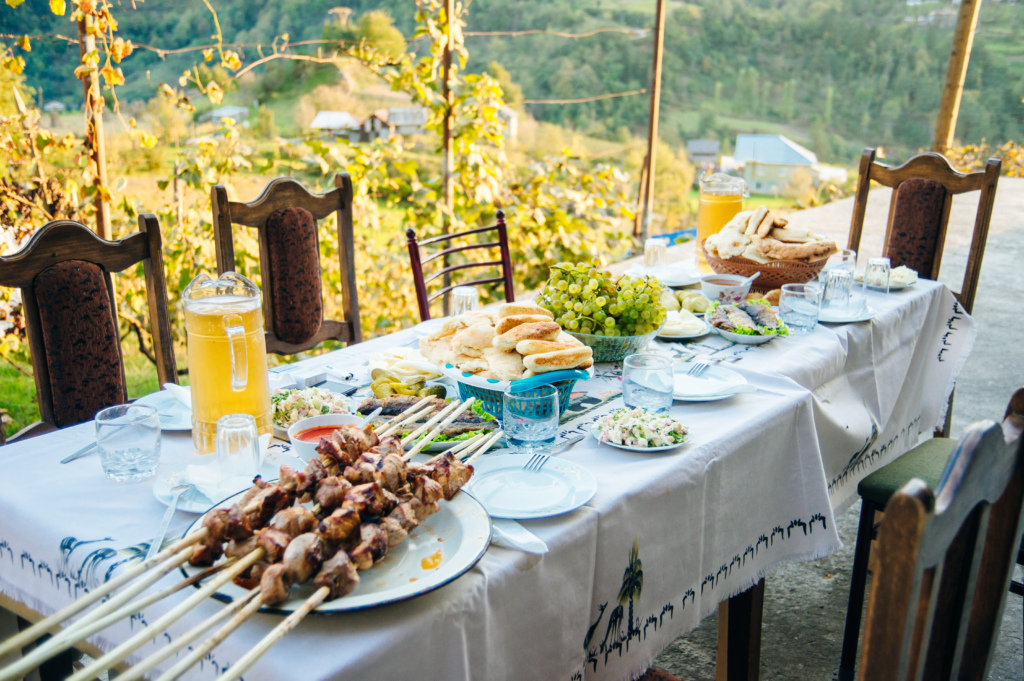
Beyond the dishes themselves, what sets Georgian cuisine apart is the country’s rich food culture. Meals are about more than just eating—they are social occasions that bring people together, often lasting for hours and filled with toasts, laughter, and conversation.
a. The Supra: A Feast of Epic Proportions
A supra, or traditional Georgian feast, is the ultimate expression of Georgian hospitality. These large, communal meals are not just about the food but are centered around the concept of shared experiences and storytelling.
- Tamada: The Toastmaster: At the heart of every supra is the tamada, or toastmaster, who leads the meal with elaborate toasts to friendship, family, love, and life. The tamada’s role is crucial in creating a sense of unity and celebration among the guests.
- Endless Dishes: A supra is a culinary marathon, with plates constantly being refilled and a never-ending stream of wine. From appetizers like pkhali to main dishes like mtsvadi, the table is always full.
b. Georgian Wine: An Integral Part of the Meal
No Georgian meal is complete without wine, and Georgia is often considered the cradle of winemaking, with a tradition that dates back over 8,000 years. Georgian wines, particularly those made using the traditional qvevri (clay vessel) method, are unique in flavor and deeply connected to the country’s history.
- Wine and Toasts: Wine plays a central role in the Georgian supra, where each toast is made with a glass of the local vintage. Whether it’s the robust Saperavi red or the crisp Rkatsiteli white, Georgian wine enhances every meal.
Winemaking Regions: The region of Kakheti is famous for its wine, and visiting the wineries in this area is a must for any food lover. Many wineries offer tours and tastings, allowing visitors to experience the rich flavors of Georgian wine firsthand.ngside its cultural landmarks.
Regional Diversity in Georgian Cuisine
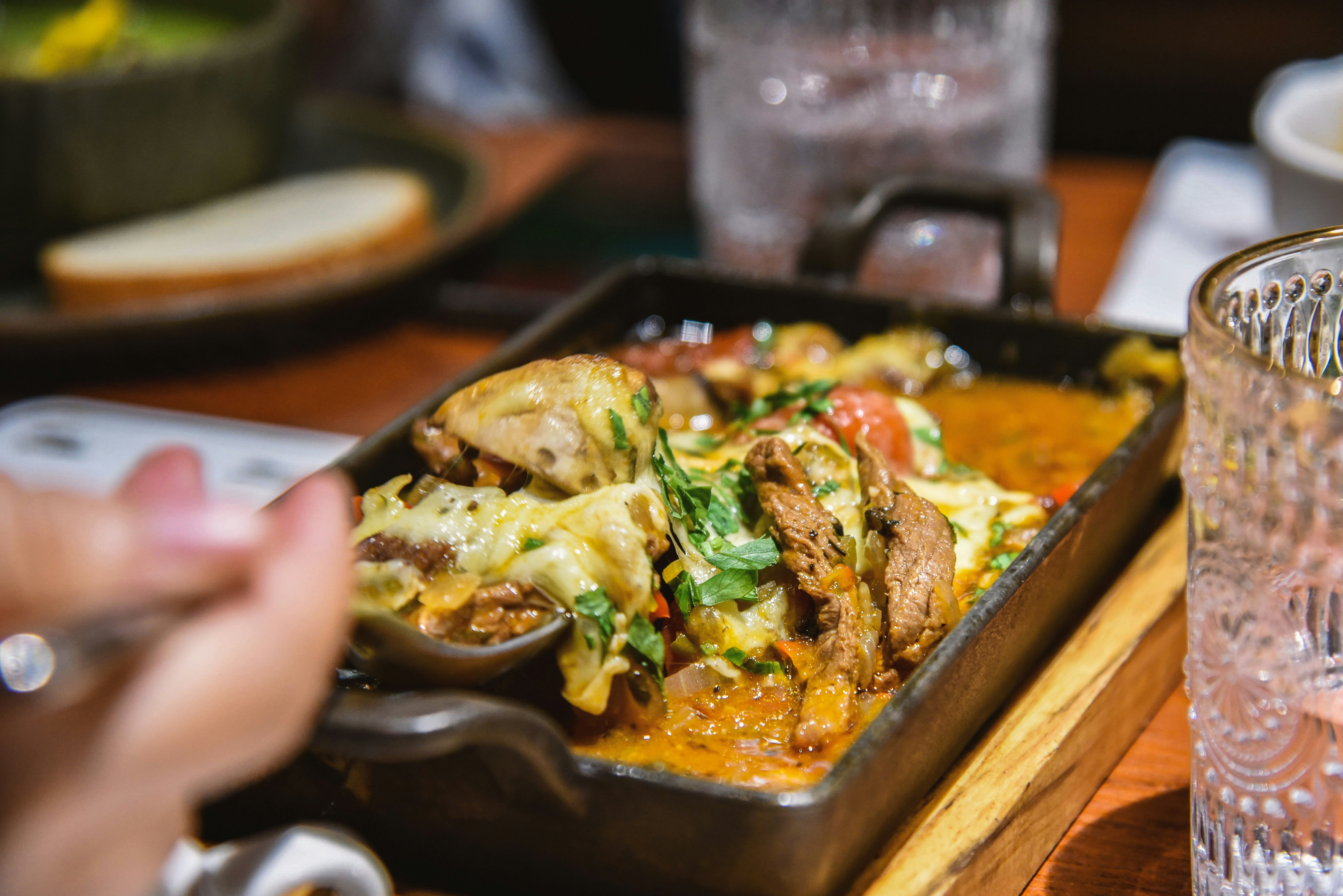
Each region of Georgia offers its own culinary specialties, showcasing the diversity and richness of the country’s food traditions. From the mountain regions to the coastal areas, every part of Georgia has something unique to offer.
a. Kakheti: The Wine and Breadbasket of Georgia
Kakheti, located in eastern Georgia, is the country’s most famous wine region. But it’s also known for its agricultural abundance, including vineyards, orchards, and farms that produce some of Georgia’s finest fruits and vegetables.
- Churchkhela: A popular treat in Kakheti, churchkhela is a traditional Georgian candy made by dipping strings of nuts into thickened grape juice. It’s often referred to as “Georgian Snickers” and is a must-try for anyone with a sweet tooth.
b. Adjara: Coastal Flavors and Dairy Delights
The region of Adjara, located along the Black Sea coast, offers a distinct culinary experience. Known for its seafood dishes and dairy products, Adjara is also home to the famous Adjaruli khachapuri.
- Seafood Specialties: The coastal city of Batumi offers a variety of seafood dishes, including grilled fish, fried calamari, and seafood stews, making it a perfect destination for travelers who love fresh, ocean-sourced meals.
c. Svaneti: Mountain Cuisine and Preserved Traditions
In the remote mountain region of Svaneti, the cuisine reflects the harsh climate and isolated lifestyle. The dishes here are hearty, simple, and made with ingredients that can be preserved through the long winters. Kubdari: A Svanetian specialty, kubdari is a meat-filled bread, often seasoned with cumin and other mountain herbs. It’s a filling, flavorful dish that sustains locals through cold mountain winters.
Seasonal and Local Ingredients
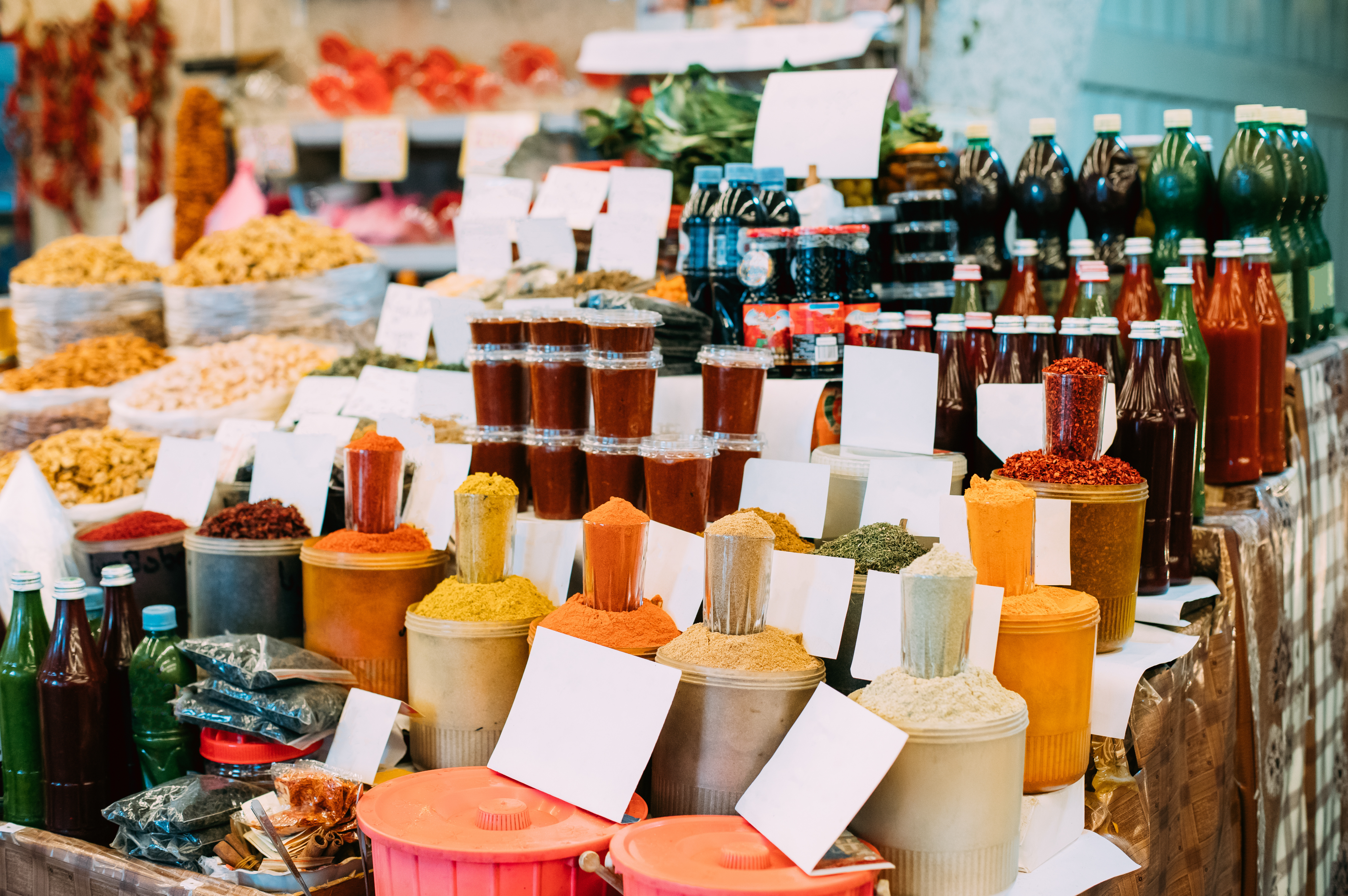
Georgia’s agricultural bounty is reflected in its cuisine, which makes heavy use of fresh, seasonal ingredients. Whether you’re dining in a city restaurant or a village home, you’ll find that Georgian food is closely tied to the seasons and the land.
- Fruits and Vegetables: Georgia’s mild climate and fertile soil produce an abundance of fruits like pomegranates, figs, and persimmons, as well as vegetables like eggplant, tomatoes, and cucumbers. These ingredients are often featured in salads, stews, and as accompaniments to main dishes.
- Herbs and Spices: Fresh herbs like cilantro, parsley, and tarragon are used liberally in Georgian cooking, giving the dishes their vibrant, aromatic quality. Spices like coriander, fenugreek, and saffron add depth and complexity to many Georgian recipes.eritage.
